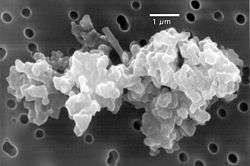Latest News for: dark nebulae
Edit
Maggie Mae Fish Sets Nebula Comedy Series ‘Amy’s Dead-End Dreamhouse’ With Paul F. Tompkins, Natalie ...
Variety 11 Mar 2025
Edit
NASA's James Webb Space Telescope captures breathtaking view of star formation
The Times of India 09 Mar 2025
Edit
Chile’s perfect skies for stargazing under threat from giant chemical plant
AOL 04 Mar 2025
Up in the arid hills 130km south of the Chilean city of Antofagasta, comets burn brightly and flawless trails of stars and nebula streak the night sky. So complete is the darkness in this part of the ...
- 1



